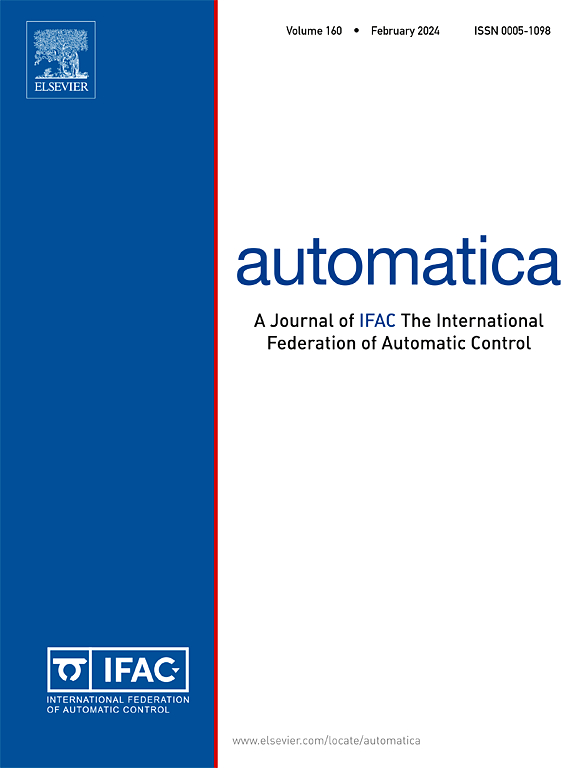Data-model-hybrid-driven near-optimal operational control of two-time-scale industrial systems with unknown operational model
IF 5.9
2区 计算机科学
Q1 AUTOMATION & CONTROL SYSTEMS
引用次数: 0
Abstract
This article discusses the optimal operational control (OOC) problem of two-time-scale (TTS) industrial systems with unknown operation model. Based on the singular perturbation theory (SPT), the OOC problem of TTS industrial systems is decomposed into an optimal regulation problem in fast time-scale and an optimal set-point tracking problem in slow time-scale. Then, by convex duality, the obtained optimization problems are equivalently transformed into convex optimization (CO) problems, and a data-model-hybrid-driven composite controller is designed. The design method of this composite controller avoids the potential numerical stiffness problems, and does not need complete system dynamics information while ensuring the steady-state output tracking error converges to zero. Finally, an example of mixed separation thickening process (MSTP) of hematite beneficiation is given to show the effectiveness of the proposed scheme.
具有未知运行模型的双时间尺度工业系统的数据模型混合驱动近最优运行控制
本文讨论了具有未知运行模型的双时间尺度工业系统的最优运行控制问题。基于奇异摄动理论(SPT),将TTS工业系统OOC问题分解为快时间尺度下的最优调节问题和慢时间尺度下的最优设定点跟踪问题。然后,利用凸对偶性将得到的优化问题等效转化为凸优化问题,设计了数据模型混合驱动的复合控制器。该复合控制器的设计方法避免了潜在的数值刚度问题,在保证稳态输出跟踪误差收敛于零的同时不需要完整的系统动力学信息。最后,以赤铁矿混合分选浓密工艺(MSTP)为例,验证了该方案的有效性。
本文章由计算机程序翻译,如有差异,请以英文原文为准。
求助全文
约1分钟内获得全文
求助全文
来源期刊

Automatica
工程技术-工程:电子与电气
CiteScore
10.70
自引率
7.80%
发文量
617
审稿时长
5 months
期刊介绍:
Automatica is a leading archival publication in the field of systems and control. The field encompasses today a broad set of areas and topics, and is thriving not only within itself but also in terms of its impact on other fields, such as communications, computers, biology, energy and economics. Since its inception in 1963, Automatica has kept abreast with the evolution of the field over the years, and has emerged as a leading publication driving the trends in the field.
After being founded in 1963, Automatica became a journal of the International Federation of Automatic Control (IFAC) in 1969. It features a characteristic blend of theoretical and applied papers of archival, lasting value, reporting cutting edge research results by authors across the globe. It features articles in distinct categories, including regular, brief and survey papers, technical communiqués, correspondence items, as well as reviews on published books of interest to the readership. It occasionally publishes special issues on emerging new topics or established mature topics of interest to a broad audience.
Automatica solicits original high-quality contributions in all the categories listed above, and in all areas of systems and control interpreted in a broad sense and evolving constantly. They may be submitted directly to a subject editor or to the Editor-in-Chief if not sure about the subject area. Editorial procedures in place assure careful, fair, and prompt handling of all submitted articles. Accepted papers appear in the journal in the shortest time feasible given production time constraints.
 求助内容:
求助内容: 应助结果提醒方式:
应助结果提醒方式:


